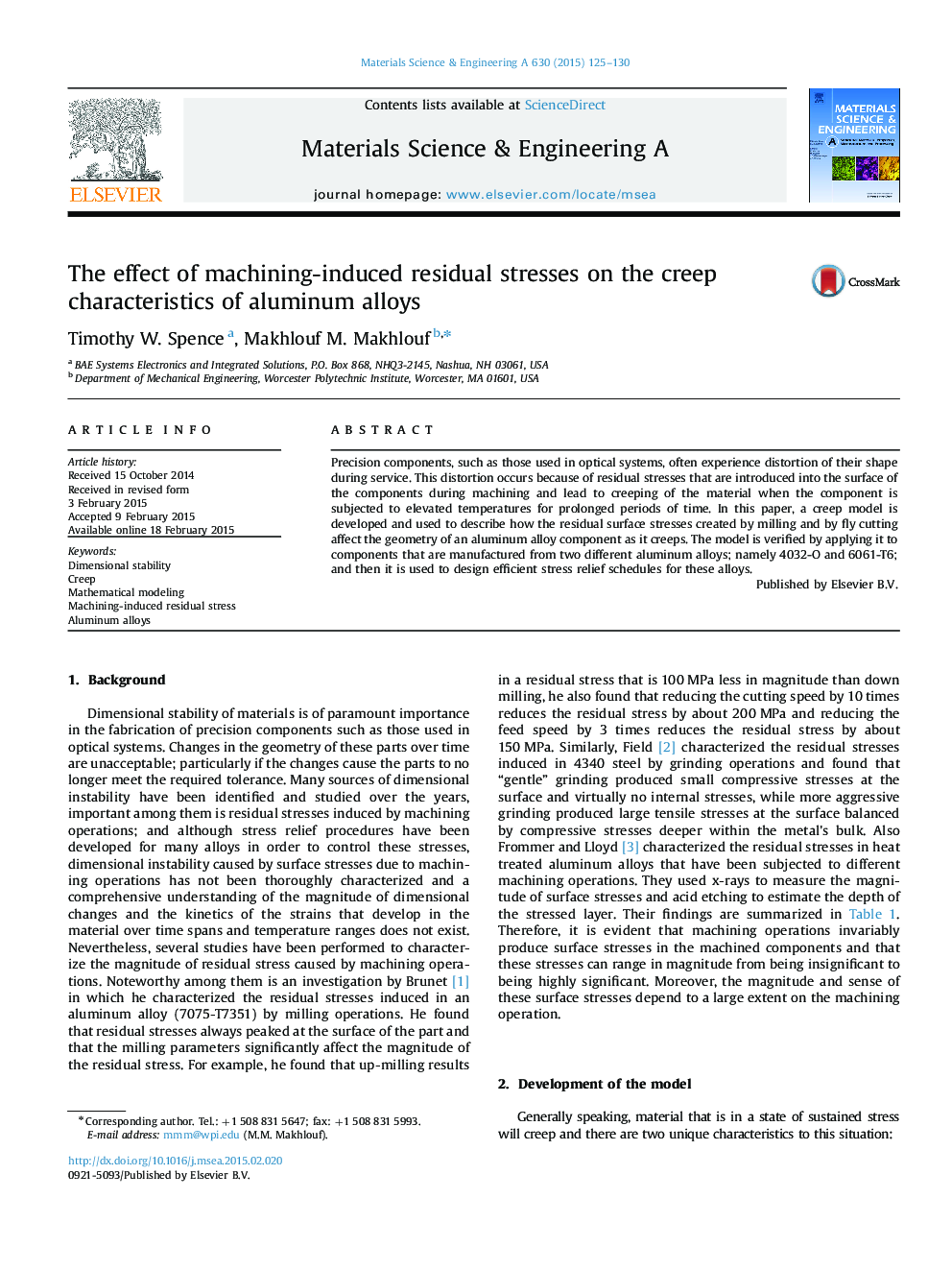| کد مقاله | کد نشریه | سال انتشار | مقاله انگلیسی | نسخه تمام متن |
|---|---|---|---|---|
| 1574450 | 1514713 | 2015 | 6 صفحه PDF | دانلود رایگان |
Precision components, such as those used in optical systems, often experience distortion of their shape during service. This distortion occurs because of residual stresses that are introduced into the surface of the components during machining and lead to creeping of the material when the component is subjected to elevated temperatures for prolonged periods of time. In this paper, a creep model is developed and used to describe how the residual surface stresses created by milling and by fly cutting affect the geometry of an aluminum alloy component as it creeps. The model is verified by applying it to components that are manufactured from two different aluminum alloys; namely 4032-O and 6061-T6; and then it is used to design efficient stress relief schedules for these alloys.
Journal: Materials Science and Engineering: A - Volume 630, 10 April 2015, Pages 125–130
